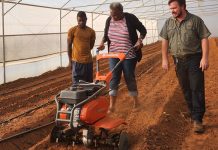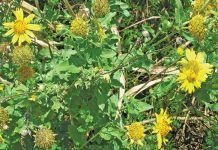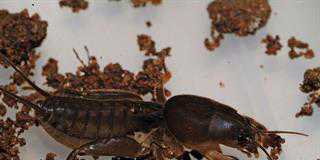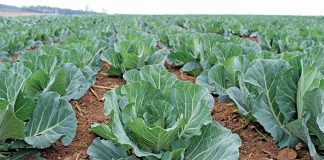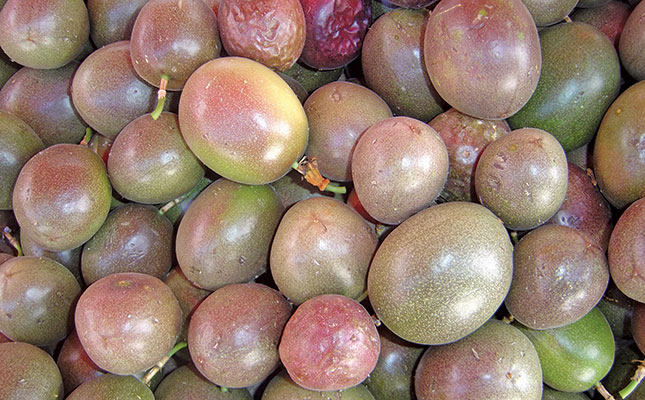
It also prevents vines from overlapping and makes spraying more effective. The vines are usually pruned during July/ August. To produce an out-of-season crop, prune in September/October.
Selective vs severe pruning
With selective pruning, train the main leader along the wire, and train the fruiting laterals to hang down freely. Cut off all laterals at ground level if they start growing along the ground. With severe pruning, cut the laterals back just above ground level. After about 12 to 15 months, cut all the laterals back about 300mm (or four to six nodes) from the main leader. Do not prune severely if you are growing granadillas on a short-term basis (12 to 18 months), as this can reduce production.
Water & Fertiliser requirements
Commercial granadilla cultivation requires well-distributed rainfall of between 1 000mm and 1 200mm a year. The maximum water requirement is about 50m³/ ha/ day or 15l/ plant/ day in summer and approximately 25m³/ha/day or 8l/ plant/ day in winter. Maintain an optimum soil-water status throughout the season. Avoid over-irrigation as it could encourage fungi to grow.
The recommended fertiliser programme for granadillas is indicated in the table below. Keep in mind that these figures are only general guidelines; for a more accurate programme on your farm, use soil and leaf analyses.
When to pick granadilla
Depending on the time of transplanting, the first fruit is usually ready for harvesting six to nine months after planting. Approximately 18 months after planting, the crop should have reached its full bearing potential. Thereafter, the plant produces two main crops annually: a summer crop from November to January and a smaller winter crop in June and July. In Limpopo and Mpumalanga, growers sometimes have a third crop in March and April. A limited quantity of fruit will, however, be available throughout the year.
It’s all in the colour
Pick fruit early in the morning. If it is fruit for the fresh market, pick it two to three times a week in summer when it is fully developed and has a light purple colour. During the cooler months, the fruit should be picked weekly. Do not wait too long.
If the fruit has a deep purple colour when harvested, it will arrive at the market in a shrivelled condition. Only fruit for processing should be harvested when it has attained this colour.
Source: Infopak compiled by Directorate Communication, department of agriculture, in co-operation with the ARC-Institute for Tropical and Subtropical Crops.

